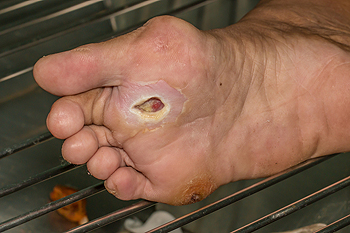Items filtered by date: March 2020
Why Caring for Wounds is Especially Important for Diabetic Patients
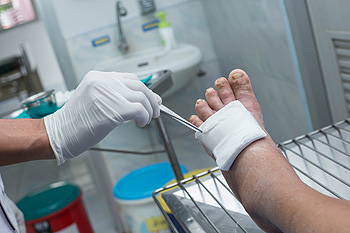 Diabetic patients tend to have a higher chance of developing foot conditions, most commonly, foot ulcers. A foot ulcer can be defined as an open sore that heals slowly. This condition typically affects a patient’s big toe, or the ball of the foot. Diabetic patients are more at risk for developing a foot ulcer for a variety of reasons, including nerve damage. Because nerve damage can cause a loss of feeling in the feet, diabetic patients may not always be aware if they have injured their feet or have developed a wound. If wounds are left untreated for too long, it is likely for an infection to develop, causing more severe foot damage. To help prevent wounds on the feet from causing serious harm, it’s suggested that if you are a diabetic patient, you check your feet on a daily basis for any abnormalities. For more information on wound care, please speak with a podiatrist for professional care.
Diabetic patients tend to have a higher chance of developing foot conditions, most commonly, foot ulcers. A foot ulcer can be defined as an open sore that heals slowly. This condition typically affects a patient’s big toe, or the ball of the foot. Diabetic patients are more at risk for developing a foot ulcer for a variety of reasons, including nerve damage. Because nerve damage can cause a loss of feeling in the feet, diabetic patients may not always be aware if they have injured their feet or have developed a wound. If wounds are left untreated for too long, it is likely for an infection to develop, causing more severe foot damage. To help prevent wounds on the feet from causing serious harm, it’s suggested that if you are a diabetic patient, you check your feet on a daily basis for any abnormalities. For more information on wound care, please speak with a podiatrist for professional care.
Wound care is an important part in dealing with diabetes. If you have diabetes and a foot wound or would like more information about wound care for diabetics, consult with Dr. Mark Gagnon from Advanced Podiatry. Our doctor will assess your condition and provide you with quality foot and ankle treatment.
What Is Wound Care?
Wound care is the practice of taking proper care of a wound. This can range from the smallest to the largest of wounds. While everyone can benefit from proper wound care, it is much more important for diabetics. Diabetics often suffer from poor blood circulation which causes wounds to heal much slower than they would in a non-diabetic.
What Is the Importance of Wound Care?
While it may not seem apparent with small ulcers on the foot, for diabetics, any size ulcer can become infected. Diabetics often also suffer from neuropathy, or nerve loss. This means they might not even feel when they have an ulcer on their foot. If the wound becomes severely infected, amputation may be necessary. Therefore, it is of the upmost importance to properly care for any and all foot wounds.
How to Care for Wounds
The best way to care for foot wounds is to prevent them. For diabetics, this means daily inspections of the feet for any signs of abnormalities or ulcers. It is also recommended to see a podiatrist several times a year for a foot inspection. If you do have an ulcer, run the wound under water to clear dirt from the wound; then apply antibiotic ointment to the wound and cover with a bandage. Bandages should be changed daily and keeping pressure off the wound is smart. It is advised to see a podiatrist, who can keep an eye on it.
If you have any questions, please feel free to contact one of our offices located in Crestwood, Orland Park, and Summit, IL . We offer the newest diagnostic and treatment technologies for all your foot care needs.
Common Symptoms of Toenail Fungus
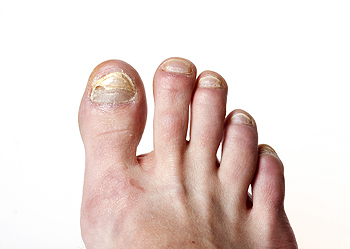 Common symptoms of toenail fungus include yellowed and thickened nails. In severe cases, the nail may crack and lift off of the nail bed, which can appear unsightly. It is caused by a fungus that lives and thrives in warm and moist environments, and is often found in public swimming pools, locker rooms, and surrounding areas. There may be existing medical conditions that can also contribute to the onset of toenail fungus. These can include diabetes, a weakened immune system, or from a previous toe injury. There are steps that can be taken which may help to prevent toenail fungus from developing. These can consist of trimming the toenails correctly and keeping them clean, in addition to washing and drying the feet thoroughly. If you have been afflicted with toenail fungus, it is strongly suggested that you consult with a podiatrist who can offer the best treatment techniques for you.
Common symptoms of toenail fungus include yellowed and thickened nails. In severe cases, the nail may crack and lift off of the nail bed, which can appear unsightly. It is caused by a fungus that lives and thrives in warm and moist environments, and is often found in public swimming pools, locker rooms, and surrounding areas. There may be existing medical conditions that can also contribute to the onset of toenail fungus. These can include diabetes, a weakened immune system, or from a previous toe injury. There are steps that can be taken which may help to prevent toenail fungus from developing. These can consist of trimming the toenails correctly and keeping them clean, in addition to washing and drying the feet thoroughly. If you have been afflicted with toenail fungus, it is strongly suggested that you consult with a podiatrist who can offer the best treatment techniques for you.
For more information about treatment, contact Dr. Mark Gagnon of Advanced Podiatry. Our doctor can provide the care you need to keep you pain-free and on your feet.
Toenail Fungus Treatment
Toenail fungus is a condition that affects many people and can be especially hard to get rid of. Fortunately, there are several methods to go about treating and avoiding it.
Antifungals & Deterrence
Oral antifungal medicine has been shown to be effective in many cases. It is important to consult with a podiatrist to determine the proper regiment for you, or potentially explore other options.
Applying foot powder on the feet and shoes helps keep the feet free of moisture and sweat.
Sandals or open toed shoes – Wearing these will allow air movement and help keep feet dry. They also expose your feet to light, which fungus cannot tolerate. Socks with moisture wicking material also help as well.
If you have any questions please feel free to contact one of our offices located in Crestwood, Orland Park, and Summit, IL . We offer the newest diagnostic tools and technology to treat your foot and ankle needs.
Common Signs of Athlete’s Foot
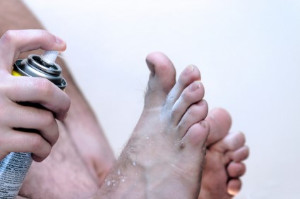 Common symptoms of an uncomfortable foot condition that is known as athlete’s foot can consist of a burning and itching sensation between the toes or on the bottom of the feet. In severe cases, blisters can develop and may become infected from intense scratching. This condition is caused by a fungus that is found in moist environments. These moist locations may include shower room floors, public pools, and surrounding areas. Additional symptoms may include foot odor, and the skin may become dry and cracked. The signs of athlete’s foot may lessen in a few weeks, but if it is recurring or will not heal, it is suggested that you speak to a podiatrist for proper treatment.
Common symptoms of an uncomfortable foot condition that is known as athlete’s foot can consist of a burning and itching sensation between the toes or on the bottom of the feet. In severe cases, blisters can develop and may become infected from intense scratching. This condition is caused by a fungus that is found in moist environments. These moist locations may include shower room floors, public pools, and surrounding areas. Additional symptoms may include foot odor, and the skin may become dry and cracked. The signs of athlete’s foot may lessen in a few weeks, but if it is recurring or will not heal, it is suggested that you speak to a podiatrist for proper treatment.
Athlete’s foot is an inconvenient condition that can be easily reduced with the proper treatment. If you have any concerns about your feet and ankles, contact Dr. Mark Gagnon from Advanced Podiatry. Our doctor will treat your foot and ankle needs.
Athlete’s Foot: The Sole Story
Athlete's foot, also known as tinea pedis, can be an extremely contagious foot infection. It is commonly contracted in public changing areas and bathrooms, dormitory style living quarters, around locker rooms and public swimming pools, or anywhere your feet often come into contact with other people.
Solutions to Combat Athlete’s Foot
- Hydrate your feet by using lotion
- Exfoliate
- Buff off nails
- Use of anti-fungal products
- Examine your feet and visit your doctor if any suspicious blisters or cuts develop
Athlete’s foot can cause many irritating symptoms such as dry and flaking skin, itching, and redness. Some more severe symptoms can include bleeding and cracked skin, intense itching and burning, and even pain when walking. In the worst cases, Athlete’s foot can cause blistering as well. Speak to your podiatrist for a better understanding of the different causes of Athlete’s foot, as well as help in determining which treatment options are best for you.
If you have any questions please feel free to contact one of our offices located in Crestwood, Orland Park, and Summit, IL . We offer the newest diagnostic and treatment technologies for all your foot and ankle needs.
Can Blisters on the Feet Be Prevented?
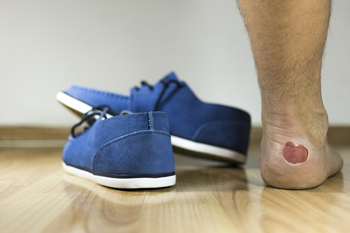 Patients who enjoy running and jogging typically know what it is like to develop a blister on the foot. Blisters are often painful and uncomfortable, and can inhibit daily activities. A blister may form as a result of wearing shoes that do not fit correctly, or from beginning a new sport. It is caused by excessive friction, and is defined as a small sac that is filled with fluid which protects the damaged skin. After several days, it generally drains naturally after the new skin has formed. There are methods that can be implemented which may help to prevent blisters from developing. These can include wearing shoes and socks that fit properly, as well as lubricating your feet before running. If you have a blister that becomes infected, or would like additional information about how to prevent blisters, it is suggested that you consult with a podiatrist.
Patients who enjoy running and jogging typically know what it is like to develop a blister on the foot. Blisters are often painful and uncomfortable, and can inhibit daily activities. A blister may form as a result of wearing shoes that do not fit correctly, or from beginning a new sport. It is caused by excessive friction, and is defined as a small sac that is filled with fluid which protects the damaged skin. After several days, it generally drains naturally after the new skin has formed. There are methods that can be implemented which may help to prevent blisters from developing. These can include wearing shoes and socks that fit properly, as well as lubricating your feet before running. If you have a blister that becomes infected, or would like additional information about how to prevent blisters, it is suggested that you consult with a podiatrist.
Blisters are prone to making everyday activities extremely uncomfortable. If your feet are hurting, contact Dr. Mark Gagnon of Advanced Podiatry. Our doctor can provide the care you need to keep you pain-free and on your feet.
Foot Blisters
Foot blisters develop as a result of constantly wearing tight or ill-fitting footwear. This happens due to the constant rubbing from the shoe, which can often lead to pain.
What Are Foot Blisters?
A foot blister is a small fluid-filled pocket that forms on the upper-most layer of the skin. Blisters are filled with clear fluid and can lead to blood drainage or pus if the area becomes infected.
How Do Blisters Form?
Blisters on the feet are often the result of constant friction of skin and material, usually by shoe rubbing. Walking in sandals, boots, or shoes that don’t fit properly for long periods of time can result in a blister. Having consistent foot moisture and humidity can easily lead to blister formation.
Prevention & Treatment
It is important to properly care for the affected area in order to prevent infection and ease the pain. Do not lance the blister and use a Band-Aid to provide pain relief. Also, be sure to keep your feet dry and wear proper fitting shoes. If you see blood or pus in a blister, seek assistance from a podiatrist.
If you have any questions, please feel free to contact one of our offices located in Crestwood, Orland Park, and Summit, IL . We offer the newest diagnostic and treatment technologies for all your foot care needs.
Diabetic Patients and Their Feet
The medical condition that is referred to as diabetes may affect the feet. This ailment can slow the healing process, and wounds on the feet can lead to further complications. Many diabetic patients experience neuropathy. Common symptoms of this can include a burning sensation, tingling, and it may be difficult to feel sensations in the feet. This can occur as a result of restricted blood flow, which may weaken the feet. Calluses can form in diabetic patients, which will become thick if not properly trimmed. This can possibly lead to foot ulcers, infection, gangrene, and possibly amputation. If you have diabetes, it is strongly advised that you are under the care of a podiatrist who can provide you with professional care and treatment.
Diabetic foot care is important in preventing foot ailments such as ulcers. If you are suffering from diabetes or have any other concerns about your feet, contact Dr. Mark Gagnon from Advanced Podiatry. Our doctor can provide the care you need to keep you pain-free and on your feet.
Diabetic Foot Care
Diabetes affects millions of people every year. The condition can damage blood vessels in many parts of the body, especially the feet. Because of this, taking care of your feet is essential if you have diabetes, and having a podiatrist help monitor your foot health is highly recommended.
The Importance of Caring for Your Feet
- Routinely inspect your feet for bruises or sores.
- Wear socks that fit your feet comfortably.
- Wear comfortable shoes that provide adequate support.
Patients with diabetes should have their doctor monitor their blood levels, as blood sugar levels play such a huge role in diabetic care. Monitoring these levels on a regular basis is highly advised.
It is always best to inform your healthcare professional of any concerns you may have regarding your feet, especially for diabetic patients. Early treatment and routine foot examinations are keys to maintaining proper health, especially because severe complications can arise if proper treatment is not applied.
If you have any questions please feel free to contact one of our offices located in Crestwood, Orland Park, and Summit, IL . We offer the newest diagnostic and treatment technologies for all your foot and ankle needs.

